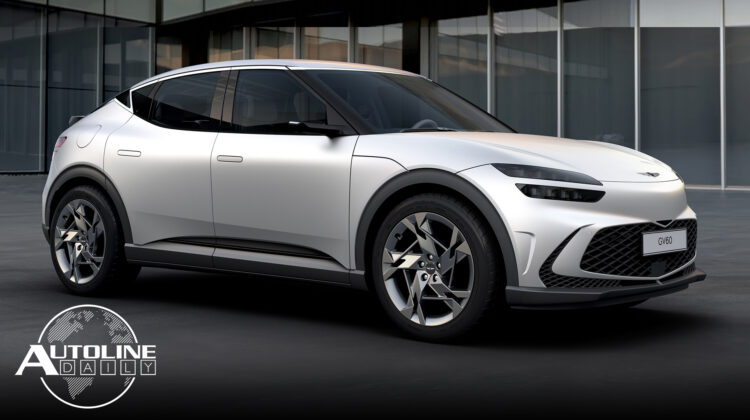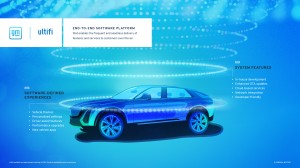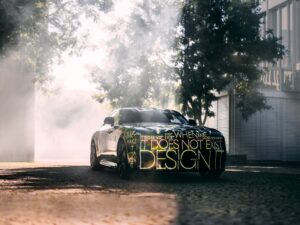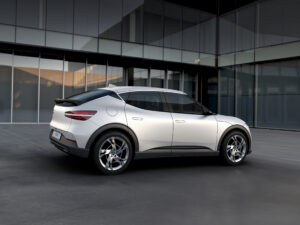
Listen to “AD #3172 – Genesis Reveals More GV60 Details; Lordstown Could Sell Plant to Foxconn; Toyota Might Return to IndyCar” on Spreaker.
Follow us on social media:
Runtime: 10:51
0:08 Lordstown Could Sell Plant to Foxconn
0:44 Toyota Might Return to IndyCar
1:30 Honda Jumps into VTOL Business
2:41 GM Launches New Software Platform
3:39 Rolls-Royce Going All-Electric By 2030
4:01 Genesis Reveals More GV60 Details
5:25 Ford Going After DIY & Maker Crowd with New Maverick
7:45 Public EV Charging Business Model Is Flawed
Visit our sponsors to thank them for their support of Autoline Daily: Bridgestone, Intrepid Control Systems, Magna and Schaeffler.
This is Autoline Daily, the show dedicated to enthusiasts of the global automotive industry.
LORDSTOWN COULD SELL PLANT TO FOXCONN
Lordstown Motors could sell its assembly plant to Foxconn according to Bloomberg. That would bring in much needed cash for Lordstown which lost three-quarters of its market value over the last year after its former CEO stepped down, likely for misleading statements about pre-orders for its truck. We think Foxconn would use the plant to make the Fisker Pear. Even though Foxconn built a huge manufacturing plant in Wisconsin, sources in the industry tell Autoline that the cement floor isn’t thick enough to support automotive operations.
TOYOTA MIGHT RETURN TO INDYCAR
Toyota might return to IndyCar racing as an engine manufacturer. That’s according to Racer magazine. Toyota won the Champ Car series in 2002 and the Indy 500 in 2003, but later dropped out of the series. In 2023 IndyCar is going to start using hybrid powertrains; a 2.4-liter twin turbo coupled with a KERS, or kinetic energy recovery system. Toyota is the world’s pre-eminent manufacturer of hybrid passenger vehicles, so it makes sense that it would be interested in racing hybrids at Indy. Roger Penske owns IndyCar, and he also owns the largest Toyota dealership in the United States, so there’s a lot of synergy surrounding this story.
HONDA JUMPS INTO VTOL BUSINESS
Flying passenger drones keep coming closer to reality. Now Honda is getting involved. It’s developing a VTOL, or a vertical take-off and landing aircraft, that’s powered by a gas turbine hybrid engine. Other automakers involved in VTOLs include Mercedes-Benz, General Motors, Toyota, Hyundai and Geely. Why so much interest from the car companies? Because these VTOLs are powered by electric motors and will be autonomous, technologies that play right into the investments that the auto industry is making.
GM LAUNCHES NEW SOFTWARE PLATFORM
Data monetization and subscription services represent the pot of gold at the end of the rainbow for automakers. So GM is launching a new software platform that will help it tap into that. GM’s current electrical architecture allows for things like OTA updates, greater data bandwidth, cyber security and processing power. Its new system, called Ultifi, which uses Linux software, will do that on steroids. Engineers have separated key software systems into a new centralized layer that acts as a hub for other vehicle systems. This allows for accelerated software development and faster deployment. GM says customers should expect regular updates just like you get on your smartphone. They’ll also get personalization options and new apps. Ultifi will be used in both internal combustion and electric vehicles and it will first start showing up in 2023.
ROLLS-ROYCE GOING ALL-ELECTRIC BY 2030
When it comes to making electric cars, everyone is jumping into the pool. Even Rolls-Royce. It will have a fully electric lineup by 2030. No more ICEs. Here’s a prototype of the first electric car it will launch at the end of 2023. Rolls didn’t reveal any of its specs but it did say it will call the model the Spectre.
GENESIS REVEALS MORE GV60 DETAILS
And now we know more about the first electric car from Genesis, the GV60. It will come in three setups; RWD, AWD and performance AWD. All feature a 77.4 kWh battery pack. The RWD version has a 168-kW electric motor and an estimated range of 451 km or roughly 280 miles. AWD combines two motors for a total output of 234 kW or 313 horsepower and a range of 400 km or 248 miles. Finally, the performance AWD version has 320 kW or 429 horsepower and 368 km or 228 miles of range. With Boost Mode, a button on the steering wheel that increases performance for 10 seconds, the performance AWD version can do 0-100 km/h in 4.0 seconds. For even more driving fun, an electronic limited slip differential helps allow for a Drift Mode, which optimizes power distribution and braking. And while the GV60 seems like it will be a fun EV to drive, we still have not seen an on-sale date from Genesis.
FORD GOING AFTER DIY & MAKER CROWD WITH NEW MAVERICK
Ford is going after the DIY and Maker crowd with the new Maverick pickup. It’s posting short, online videos that show owners how to build their own accessories. For example, Ford dealers will happily sell you a $250 Yakima bike rack accessory, or you can watch a video of how to make your own for $45. The videos tell you exactly what kind of bolts, nuts, washers and wood to buy. The same goes for installing racks or lights in the bed or custom installing your own compressor. There’s even a QR code in the back of the bed that you can scan to get ideas for other projects. And Ford fully expects that owners will start posting their own videos of how to hack the truck. The Maverick comes with two 12-volt wiring packages in the bed with their own connectors, so Makers don’t have to slice into part of the wiring that could affect things like the taillights. Next up, you’ll be able to download the plans for 3D printing your own containers and cupholders that you can clip onto different parts of the interior with special tethers. This is a cool idea, and we think it’s an excellent idea of how to build a community around this truck.
If electric cars are ever going to catch on, there needs to be a nationwide network of public charging stations. But what if that isn’t a viable business model? John will be here in a minute with something to say about that.
PUBLIC EV CHARGING BUSINESS MODEL IS FLAWED
Electric cars will never hit their full sales potential until Ma and Pa America know they can safely travel far from home and easily find someplace to charge up. But the traditional automakers have no interest in building public charging stations. They want someone else to do it.
Same goes for the electric utilities. They’ll happily sell electricity to the charging companies, but they have no interest in making the big capital investment to build public charging stations.
So, in the United States, it’s up to the public EV charging companies. But their business model could be seriously flawed.
You see, gas stations don’t make much money from selling gasoline and diesel fuel. They make their money by selling lottery tickets, cigarettes and beer.
Mobil or Shell or BP don’t own those gas stations. They’re mom and pop franchises, who are not going to make big investments in EV chargers unless they know they’ll pay off. Right now, the numbers don’t pencil out. While prices can vary, a gasoline pump may cost around $15,000 while a high-speed charger may cost around $70,000.
Public chargers are typically in places like the parking lots of shopping malls, often sitting unused. And all they do is sell electricity. They don’t sell lottery tickets, cigarettes and beer.
We know the financial results for the publicly traded charging companies like EVgo and Chargepoint. They are bleeding red ink. Electrify America is not publicly traded, so we don’t know its numbers, but it’s probably losing a lot of money, too.
Of course, it’s still early days. These are startups, their top line growth is impressive and maybe once they’ve finished building a nationwide network they can start to post profits. But even then they’ll be competing against home charging, where EV owners get electricity that costs 30-50% less.
EV enthusiasts are posting road-trip videos of public chargers that are not working. If the public charging companies can’t keep their chargers up and running now, what happens when they add thousands more?
The auto industry is betting heavily on EVs. If sales of electric cars don’t ramp up as expected, those investments could turn out to be disastrous. And if the public charging companies don’t have a viable business model, well, then what?
That’s how I see it and we always welcome your feedback. But with that we wrap up today’s show, thanks for watching.
Thanks to our partner for embedding Autoline Daily on its website: WardsAuto.com
Seamus and Sean McElroy cover the latest news in the automotive industry for Autoline Daily.










